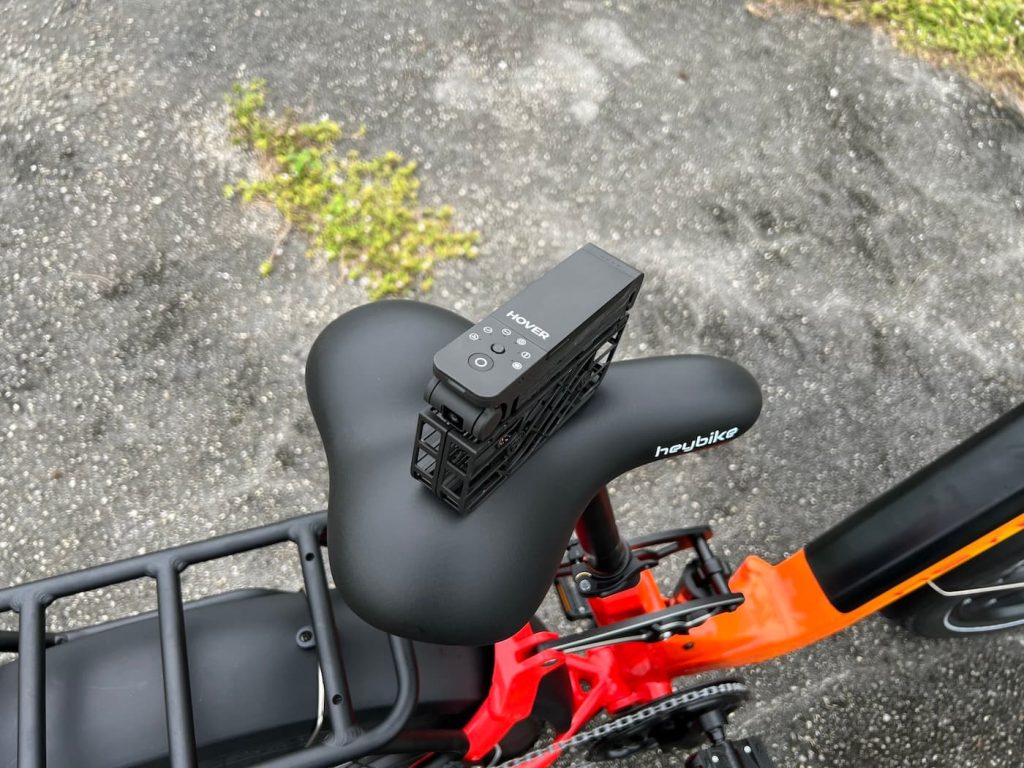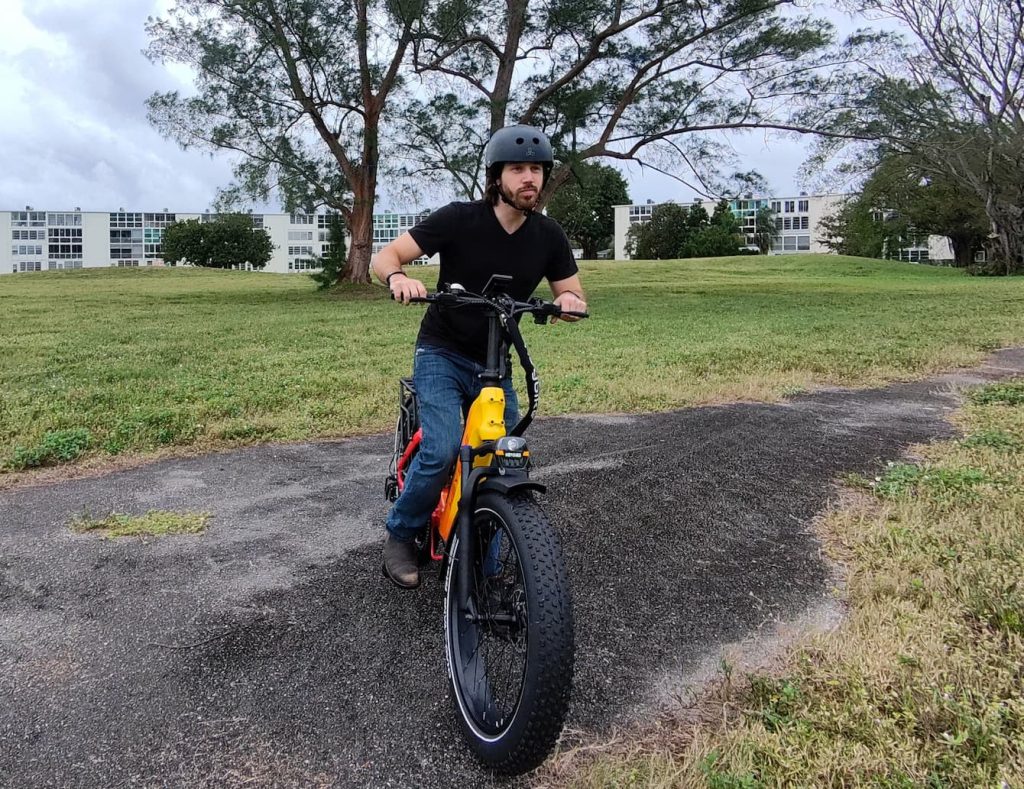
E-bikes are my main form of transportation, and so the right gear can make a big impact on my rides. While I normally review e-bikes themselves, in this series we’re exploring some of the helpful tools, gear, and other devices that can help make living a car-free life easier, more convenient, or just more fun! And the HoverAir X1 folding drone has proven to be an incredible camera for my rides, fitting squarely into the ‘fun and conventient’ category.
Because of the work I do (namely this), I’ve long been on the hunt for a super tiny autonomous drone that can shoot decent-quality photos and videos on my rides. I don’t need Planet Earth documentary quality pics and vids, but I’d like something I can still use professionally in YouTube videos and online reviews to capture my solo rides as if I had a cameraman with me.
I not only ride all over the place locally, but I also travel around the world to ride e-bikes. Whether I’m riding down my own street or down an Amsterdam bike lane, I try not to leave home with more than will fit in a backpack. That’s especially true when flying internationally. And that means I often have to leave my pro-level drones behind.
When I can manage to take a drone, it means I can get awesome shots to set the stage or show off cool views of my rides and the places I ride in. And sometimes it’s just nice to grab some third-person shots of myself on the bike, or capture cool drone angles of the places I ride for fun.

When the HoverAir X1 team reached out and asked if I wanted to test their tiny folding drone, I jumped at the opportunity. And I’m glad I did, because this is my new main go-to riding drone. It can literally fit in my pocket – that’s how small it is.
It folds to protect all of its important bits, though I bought a cheap case for a portable hard drive to keep the drone in so it wouldn’t get damaged bouncing around in my backpack while riding or during plane travel.
Even with the additional case I got for it, the whole package takes up half the space of my already small DJI Mini 3 Pro drone.
Despite its small size, the footage it takes is actually decent. It isn’t as good as my DJI drones, but it’s still pretty darn good. To see a sample shot that I worked into my last e-bike review, check out the video below from 1:09 to 1:16.
The HoverAir X1 can shoot 2.7k video, though only at 30 fps. That’s still good enough to give me a roughly 50% crop ability when I output 1080p videos for YouTube. I won’t be doing any slow-motion shots, but I can survive.
It also includes 32Gb of internal storage, so it’s one less memory card I have to worry about. I download the shots and pictures straight to my phone with its wireless connection, and I’m all set.
The video is surprisingly stable, considering the gimbal is only single-axis, but the electronic image stabilization adds to the effect and gives me great footage without the kind of shake you normally see in cheap drones.
The photos it takes are decent, though not amazingly sharp. Of course I’m not going be able to replace my Sony camera with it for pro-level shots, but they’re still surprisingly good. They can also capture perspective shots that my Sony can’t, or at least not without another human holding it while I ride!

The HoverAir X1 also launches and lands from the palm of my hand, which is a weirdly useful feature for cyclists. I often ride off-road in grassy or rocky areas lacking a good landing pad. Even when I can find a spot free of weeds or grasses to take off with my DJI drones, I usually catch them out of the air to avoid landing them on uneven ground and damaging the propellers on grass or rocks. So with the palm launch and landing, the X1 doesn’t care what type of terrain I’m on.
Oh, and I saved the best part for last: there’s no remote control. I know that sounds weird for a drone, but it really just does fly itself. Before you take off, you push a button on the top of the drone to select from different pre-determined flight shots, such as orbit (circles around you), rocket (shoots up and gets a top down view), dolly shot (moves in a straight line), follow mode (follows you around), tripod mode (stays in one spot but rotates to keep you in view as you move), etc. You can also make fine tune adjustments to those modes in the phone app ahead of time, such as how far back you want it to stay while following you or how high to fly during shots.
I assumed this setup wouldn’t work very well, but I’ve tried all of the modes and despite my cynicism, they all worked surprisingly well. The following mode even avoids trees and other obstacles as I ride through them.
You can see working it in the sample videos I cut together below.
If you want to get landscape shots or other non-following shots, you can switch it into manual control mode and fly it from your phone, but that’s not generally the kind of shooting I do when I’m riding. It’s nice to have that option though, especially when you want to grab a few seconds of high-angle scenery to set a scene.
For a roughly $350-ish drone (depending on the combo package), it does an amazingly good job at getting the kind of shots and images I need. If it only came with decent video, or was just a tiny size, or just had excellent autonomous flying and following modes, each of those would be great. But to get it all in one package is quite frankly amazing at this price.
Of course, no piece of gear is perfect, and I have complaints here as well. The battery is small, meaning I get about 9-10 minutes of flight time per charge. I bought a second battery due to this, so now I swap a battery in when I need to. Though the style of flying where it shoots in clips and then comes back to you to land in your hand means that each flight is rarely more than a minute or so. That allows you to film several clips on one battery in a single session.
Next, it just feels so darn light. It’s held up great so far, but at just 125 grams (barely a quarter pound), it feels like I don’t want to squeeze it too hard or I’ll break it. I guess that’s not really a complaint, especially since it’s only worked great so far. But it definitely just feels like there’s not much meat to it that would protect it in a crash. Yeah, the propellers are protected, but what about the folding mechanism? Considering I haven’t been able to crash it yet, I just don’t know the answer there.
But all told, it’s served me well across many bike trips and in multiple countries so far. It seems like the perfect tiny travel or cycling drone that can fit in your pocket yet still capture nice videos and images all by itself. I’ve finally found the bike trip drone I’ve been looking for!

FTC: We use income earning auto affiliate links. More.



Comments